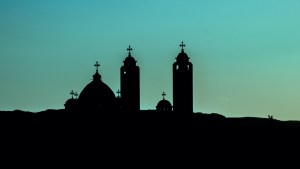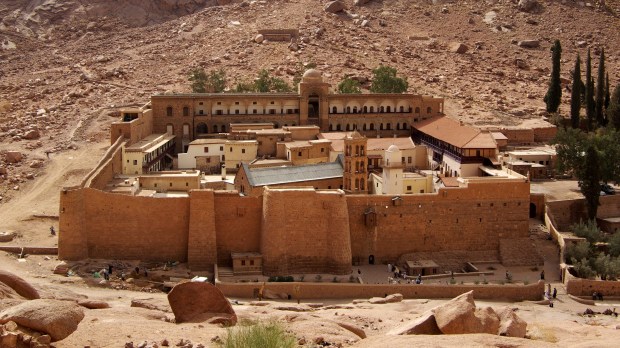Lenten Campaign 2025
This content is free of charge, as are all our articles.
Support us with a donation that is tax-deductible and enable us to continue to reach millions of readers.
One of the oldest Christian monasteries in the world still in operation, the Monastery of Saint Catherine in Sinai is home to almost 2,000 years of history — and many more years of legend: tradition claims, for example, that the main altar of the monastery is built on the spot where the Burning Bush first addressed Moses.
But the monastery, declared a world heritage site by UNESCO, also holds other places of honor. For example, it accommodates the oldest continuously operating active library in the world.

Read more:
The oldest library in the world goes digital
From the day it was founded in the 6th century (between 548 and 565, according to chronicles), the library of St. Catherine at Mount Sinai has never closed its doors. Built during the reign of Justinian I, the monastery was originally sponsored by the mother of Constantine the Great, Empress Helena. Its walls are still home to ancient Roman scrolls dating back to the days when the monastery itself was founded, which makes St. Catherine’s the second largest collection of codices and manuscripts in the world, right after the Vatican Library in Rome. In fact, from this monastery comes the famous Codex Sinaiticus, the biblical text dated to the year 345.
The collection of the monastery, as explained by Dattatreya Mandal for the Realm of History website,includes a copy of the Gospels from the 5th century, a copy of the “lives of the holy women” of 779 and a copy of the Apology of Aristides, probably one of the few surviving copies of this text, as the original Greek version still remains lost. It is also home to plenty of Arabic manuscripts, among which a copy of the “Ashtiname Muhammad” can be found: this is the text in which the Muslim prophet claims to offer protection to the monastery, grants tax exemptions to the Christian monks living in it, and also exempts them from military service during the years the area was under Islamic rule.

Read more:
Egyptian monastery built at home of third-century Christian monk reopened

